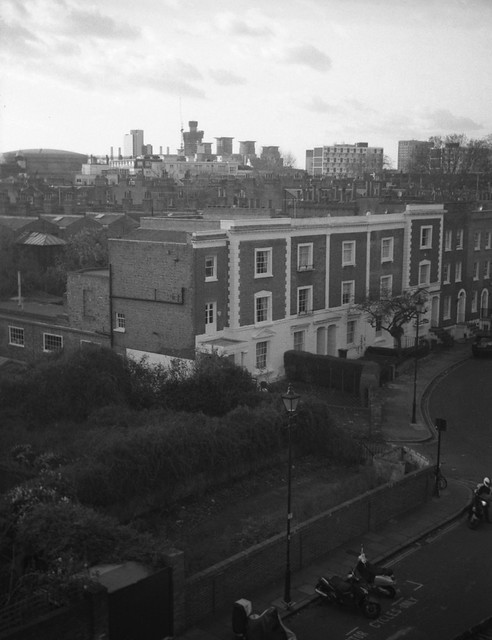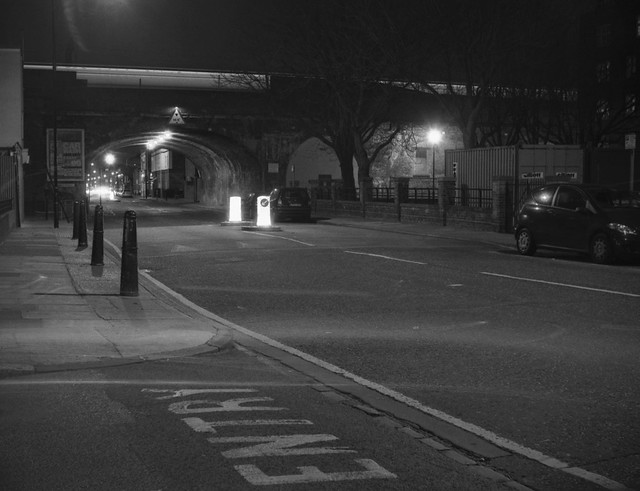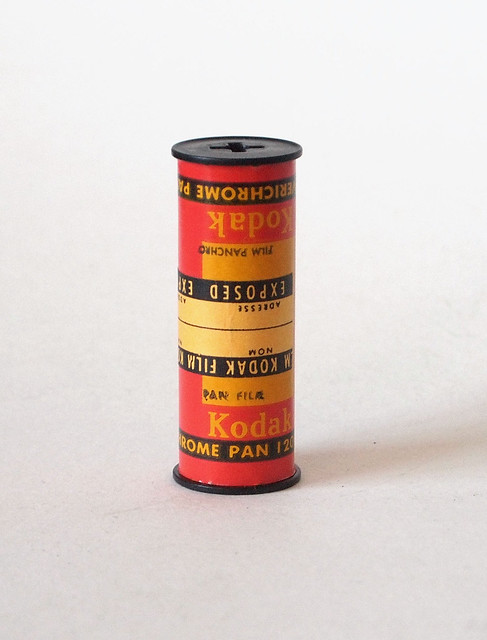 |
| Kodak Verichrome Pan 120 film, expiry date July 1964 |
Verichrome Pan was a black and white panchromatic film produced by Kodak from 1956 to c.2002. The film had a speed rating of 125 ISO, which would have been considered fast at the time it was introduced and replaced Verichrome, which was its orthochromatic predecessor. This advert for the original Verichrome lists its various unique qualities, including the fact that it was double coated, with two layers of photographic emulsion, both fast and slow, and also that it had enormous latitude, claiming an exposure range of 1 to 2,400. I haven't found any information as to whether Verichrome Pan kept these characteristics, but I doubt manufacturers would now claim such latitude for modern film emulsions (although I have used HP5 from 64 to 3200 ISO).
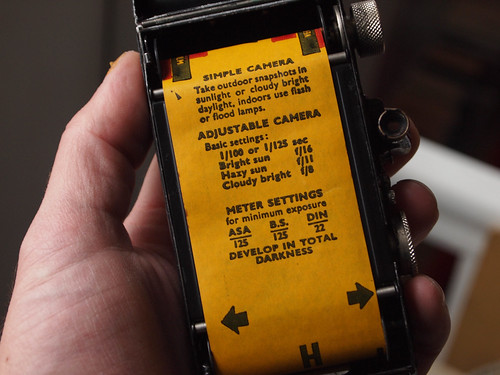 |
| Verichrome Pan in 127 format, showing instructions for use on the paper backing |
I shot a couple of rolls of out-of-date Verichrome Pan on the Summer 127 day in July. One of these had come from the box of a Kodak Brownie Starmite, with an expiry date of September 1975; the other was one of three films I bought from a certain auction site. The results from both sets of films were disappointing: the rolls bought online had evidently got damp at some point and the backing paper was stuck to the film: soaked and removed, the paper took some of the emulsion with it; the roll from the Starmite box came away cleanly from the backing paper, but nonetheless this seems to have left behind a textured pattern on the emulsion.
 | ||
| Sceaux Gardens, Bethnal Green: the black areas on the image are where the emulsion stuck to the backing paper |
After the results with the 127 format film, I hadn't expected much from a roll in 120 format that had been inside the case of a Kinax folding camera that I bought. This roll of Verichrome Pan had an expiry date of July 1964. The box also contained a leaflet on Kodak films. I shot the roll in my Zodel Baldalux camera in Berlin during the summer, then stand processed it. Unlike the recent out-of-date FP4, I didn't take into account the loss of sensitivity with age, and exposed it at the box speed of 125 ISO. The resulting negatives are very thin, and while they have held the highlights well, the rendering of shadow detail is patchy, although the results are much better than the 127 format films. (All films were stand-developed in Rodinal, diluted 1:100, for 1 hour).
 |
| Pergamon Museum, Berlin, shot on Verichrome Pan, expiry date July 1964 |
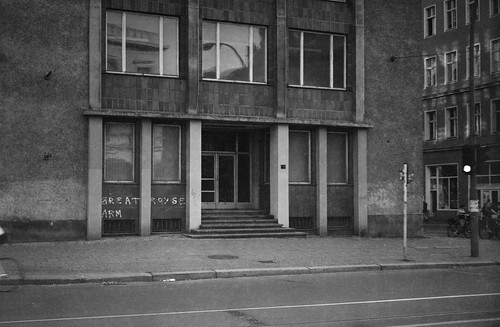 |
| Oranienburger Straße, Berlin, shot on Verichrome Pan, expiry date July 1964 |
